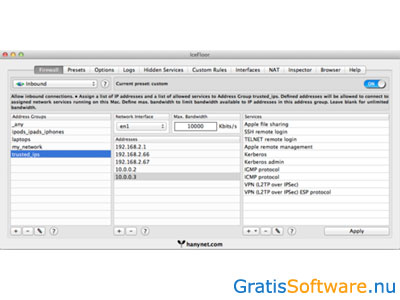

ruleset deployment via relay (shared rulesets only).number of routers, firewalls, or proxies in between with limited system resources (shared rulesets only).computer's disk and CPU speed ( local rulesets only).heartbeat interval and bidirectional communications (see Agent-manager communication).
Block software icefloor update#
Until it succeeds, the status will indicate that the ruleset update is pending. The time required depends on: If a computer was using shared allow or block rules created via the API, the relay will also transmit those new rules to other agents that use the shared rules the next time they connect. The next time that the agent connects with the Deep Security Manager (local ruleset) or relay (shared ruleset), it will receive the new rules. If you have created a block rule for a batch file or PowerShell script, you will not be able to copy, move, or rename the file when using its associated interpreter (powershell.exe for PowerShell scripts or cmd.exe for batch files). When you change allow or block rules, it affects all computers that use the same ruleset. If you need more information to decide whether to allow or block, click the software name, then use the details panel on the right side. If your search filter hides too much, remove one of the search terms by clicking the X button next to it. Search results will show only incidents that match all criteria. Click a bar in the graph that indicates a time when software changed to zoom in on that time period.In the pane on the right, click the file name or computer name in the details in order to add them to your search filter.Select whether to Group by File (Hash) or Group by Computer.
Block software icefloor install#
You search for these attributes: Change By Process, Change By User, File Name, Host Name, Install Path, MD5, SHA1, and SHA256. Enter search terms in the search filter field.If application control has not detected unauthorized software changes, or if you have already resolved them by creating allow or block rules, then this pane's computer groups and smart folders will be empty. Unlike the Computers tab, this pane usually does not show all computers. In the pane on the left, select Computers or Smart Folder.From the menu next to Application Control: Software Changes, select a time range such as Last 7 Days to omit all events that aren't in that period.There are several ways you can filter to see only specific occurrences of unrecognized software:.To quickly find all software changes on all computers and easily create allow or block rules for them, use the Actions tab. Reset application control after too much software changeįor an overview of the application control module, see Lock down software with application control.


After application control is enabled and logging or alerts are configured, you might receive notification that the Deep Security Agent has detected unrecognized software changes.


 0 kommentar(er)
0 kommentar(er)
